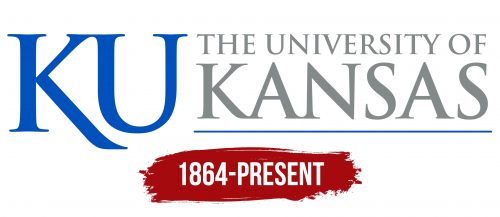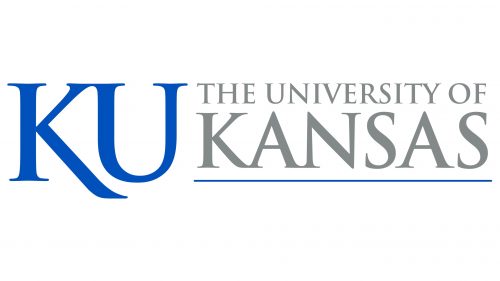 KU (University of Kansas) Logo PNG
KU (University of Kansas) Logo PNG
The KU (University of Kansas) logo is its history surrounded by modern traditions. At least, that’s how the university itself interprets its visual identity. It represents its roots through the prism of religion and relevance, demonstrating the values followed by students and teachers. It’s about spiritual enrichment, augmented with new knowledge and dreams.
KU (University of Kansas): Brand overview
Meaning and History
The visual identity of this university includes not only the logo but also a seal. The seal is considered as old as the higher education institution itself, appearing in 1866 when the university opened its doors to students. The seal’s design was chosen and approved by R.W. Oliver, the first rector of KU. The theme of both early and later versions has always been a religious scene related to the biblical figure Moses, who kneels before a burning bush. This scene perfectly resonates with the Latin phrase “Videbo Visionem Hanc Magnam Quare Non Comburatur Rubus,” taken from Exodus (3:3). Translated into English as “I will see this great vision in which the bush does not burn,” it represents the university’s motto. The logo is business-like and practical: it considers current design requirements to stay modern.
What is KU (University of Kansas)?
KU (University of Kansas), located in Lawrence, is a public university in the R1 category – a very high educational level with research activities and 350 programs. To conduct quality educational processes, it has several specialized centers, including medical, humanities, and agricultural. It also has its own sports department and research base. KU was established in 1864 by the Kansas State Legislature and opened in 1866.
1864 – today
The emblem of KU (University of Kansas) has strictly limited circulation: it can be used to identify the university in print materials and official documents, including advertising sources. It serves as a guarantee of the legitimacy of their content and acts as a kind of signature, hence the primary focus on the name.
The inscription occupies two lines, typeset in the same font. The upper part is in lowercase because it contains the phrase “The University of,” which in size matches the single word “Kansas” in the lower row. The designers have matched their length by varying the size of the glyphs. All characters have thin serifs that connect at certain points – for example, between “V” and “E,” “R” and “S,” “T” and “Y,” and also between “K,” “A,” and “N.”
Below runs a narrow blue line colored in the hue of the “KU” sign. This abbreviation stands for “Kansas University.” It can be used separately from the rest of the inscription, as specified in the university’s license, and strictly monitored by its marketing communications department. The abbreviated name must be clear and prominent. It is very noticeable that the right leg of the first letter is longer than the other strokes, symbolizing the hill on the Lawrence campus.
The Seal
The KU (University of Kansas) seal has a religious character, matching the university’s motto, “I will see this great vision in which the bush does not burn.” It depicts Moses kneeling before the burning bush – a bush that is burning but not consumed, where God appeared to him. The seal was introduced simultaneously with the university’s opening in 1866, chosen by rector R.W. Oliver himself. The original version is no longer in use; the current second version was redesigned in 1964 by professor of arts and sculptor Elden Tefft for the university’s centennial.
The shepherd is depicted against the backdrop of mighty mountains – silent and ancient witnesses to many historical events. The image is placed at the center of a circle, surrounded by several bands of different widths. The university’s motto in Latin is placed within these bands, with each word separated by a bold dot. This line is from Exodus. Following this are the university’s name (also in Latin) and the year of its official founding – 1865. All inscriptions are typeset in thin, sans-serif glyphs in uppercase.
Font and Colors
The typefaces in the academic seal and the university logo differ in design: the former uses grotesque letters, while the latter uses serifs. This is the Trajan font, used by most higher education institutions, because it effectively conveys formality and solemnity.
Though the university colors are crimson and cobalt blue, only blue is used in the visual identity. Thus, all elements of the seal, the highlighting stripe, and the “KU” abbreviation are blue. They are complemented by white and grey. In some instances, black is also present.







